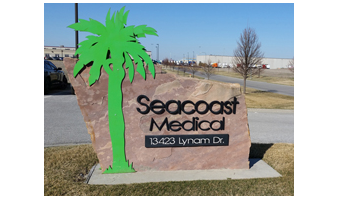By Laura Thill
Pharmaceutical distributor uses in-house reps to connect with 25,000 clinics
 David MacFarlane’s decision to start his own pharmaceutical distributorship came in 1991, when the sales consultant realized this could enable him to make a greater impact on his customers. “At the time, it made sense to help clinicians manage the injectables they needed to run their clinics,” he says. “I started Seacoast Medical (Omaha, Neb.) with two hospital customers, and by 1995, we were a national distributor, with 11 sales reps across the country.”
David MacFarlane’s decision to start his own pharmaceutical distributorship came in 1991, when the sales consultant realized this could enable him to make a greater impact on his customers. “At the time, it made sense to help clinicians manage the injectables they needed to run their clinics,” he says. “I started Seacoast Medical (Omaha, Neb.) with two hospital customers, and by 1995, we were a national distributor, with 11 sales reps across the country.”
Rather than continue to place more feet on the street, however, it occurred to him that by bringing everyone under one roof, he might actually extend his reach. “In 1996, we brought all of our sales reps in house and began our telesales operation,” he says.
At the time, it was more common for distributors to send their reps into the field, he notes. But, there clearly was movement toward telemarketing sales. And, while MacFarlane acknowledges that some companies had the foresight to move in this direction much earlier, within a year, Seacoast Medical had grown its revenue to four times its original size, as well as “significantly reduced” its operating costs. “This was definitely a homerun for us.”
MacFarlane had been helping his customers manage just-in-time inventory since founding Seacoast Medical. But, he found that customers ran out of product too often, leading him to design a storage rack that could hold more product and accommodate customized storage space. The approach worked, and for the past 25 years, Seacoast Medical has continued to build its non-acute-care customer base. “Today, we service 25,000 non-acute pharmaceutical clinics,” he says.
A phone call away
True, there is a lot to be said for having personal face-time with customers, MacFarlane admits. At the same time, telesales has its advantages. For one, “It’s much less expensive to manage everyone under one roof,” he says. “It’s easier to oversee communications and HR issues, and it’s easier to reach more customers more quickly.” The key to successful telesales is to ensure one’s staff receives excellent training, he adds. “They need to know which drugs are on formulary, what contracts to use, how prices vary and more,” he says. Which is why he makes certain his staff receives extensive product training by manufacturer reps. This, together with Seacoast Medical’s well-stocked inventory, ensures the company’s telesales reps are as prepared as their field sales counterparts to address their customers’ needs.
In addition, MacFarlane has taken above-and-beyond measures by developing a software program that allows him to analyze his customers’ purchasing patterns more efficiently in order to provide optimal solutions for their clinic. Indeed, computer technology has been an industry game changer, he points out. “To compete in this space today, we need software and website programs that give us access to data. Our software separates us from our competitors and allows us – and our customers – to slice and dice data and create customized reports. Many companies still do not have this.”
In hindsight
MacFarlane attributes much of his success to his foresight when it came to pursuing the pharmaceutical market. “For the longest time, the group purchasing organizations weren’t well organized in this space,” he says. “We definitely were one of the forerunners here. Still, looking back, we would have pursued this even more aggressively. It’s this relationship that has helped our business grow.” Today, it is close to impossible for distributors to penetrate the pharmaceutical market, he adds, particularly if they don’t have ties to a GPO. “As more manufacturers close their lines of distribution, distributors who aren’t associated with a GPO don’t have access to customers.”
For Seacoast Medical’s part, the company’s solid beginning continues to propel it forward. “We are experiencing some very exceptional and rapid growth,” says MacFarlane. “A lot of this has to do with our customer service and the customer experience our sales reps are able to provide. Whereas many of our competitors are in multiple markets – physician office, long-term-care, hospital, etc. – and try to be everything to everyone, we focus on one market (pharmaceutical) and can provide certain things to certain customers. This gives us the flexibility and capacity to turn on a dime and customize our service to accommodate our customers’ business model.”
As challenging as it is for new distributors to penetrate the pharmaceutical market, MacFarlane says it’s important to be persistent. “Entry into the pharmaceutical market is a long, tedious process,” he says, particularly given federal drug regulations. But distributors should not give up. They should start out with a few lines and grow into their business. And, as more manufacturers open their distribution lines, the persistent distributors will be “first on the list,” he adds. When distributors consistently knock on manufacturers’ doors, when the time is right, “they will let you in,” he says. “It took Seacoast Medical six or seven years [to build more of these relationships], but it happened.”